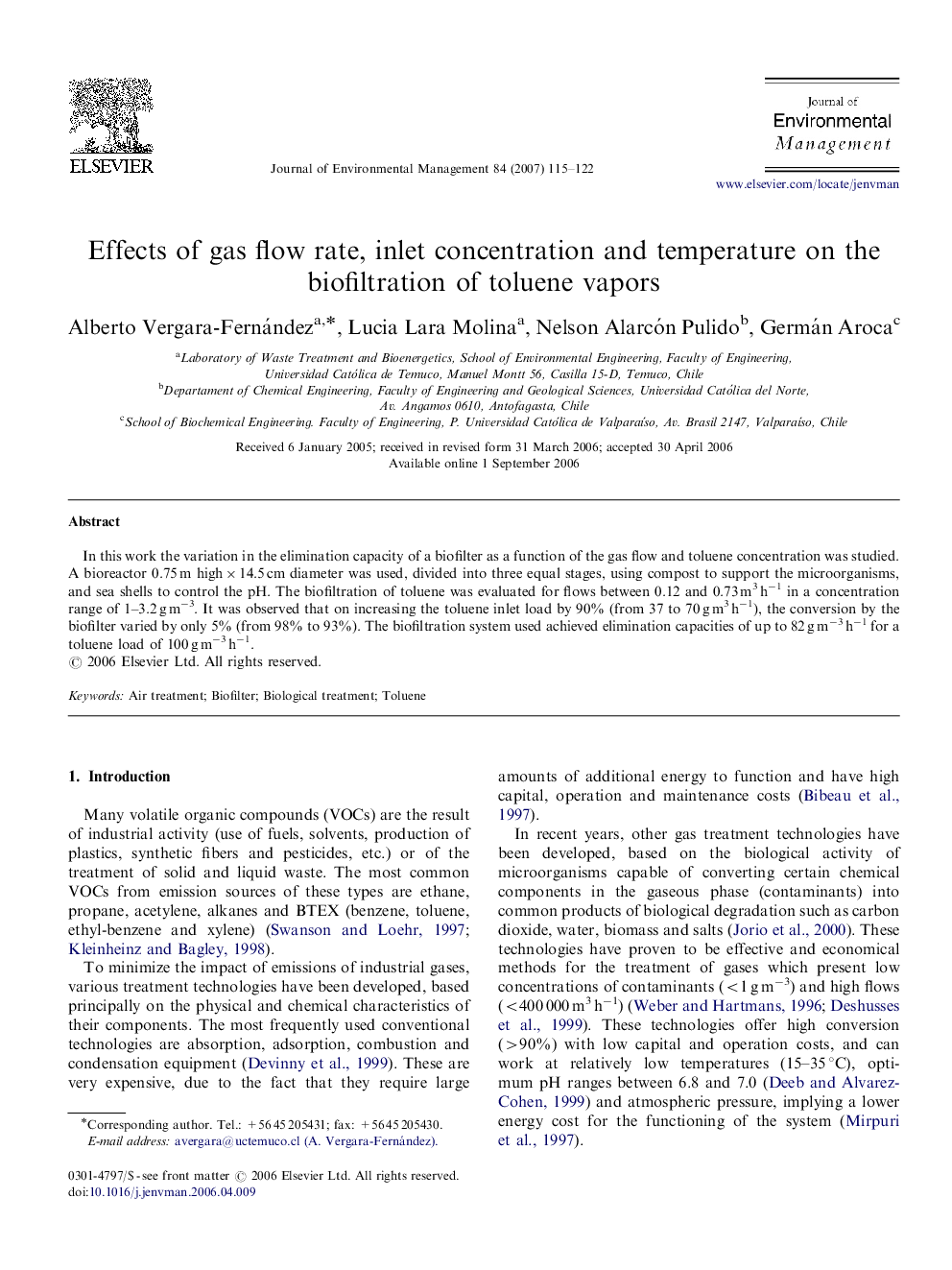| Article ID | Journal | Published Year | Pages | File Type |
|---|---|---|---|---|
| 1058829 | Journal of Environmental Management | 2007 | 8 Pages |
Abstract
In this work the variation in the elimination capacity of a biofilter as a function of the gas flow and toluene concentration was studied. A bioreactor 0.75 m high×14.5 cm diameter was used, divided into three equal stages, using compost to support the microorganisms, and sea shells to control the pH. The biofiltration of toluene was evaluated for flows between 0.12 and 0.73 m3 h−1 in a concentration range of 1–3.2 g m−3. It was observed that on increasing the toluene inlet load by 90% (from 37 to 70 g m3 h−1), the conversion by the biofilter varied by only 5% (from 98% to 93%). The biofiltration system used achieved elimination capacities of up to 82 g m−3 h−1 for a toluene load of 100 g m−3 h−1.
Related Topics
Physical Sciences and Engineering
Energy
Renewable Energy, Sustainability and the Environment
Authors
Alberto Vergara-Fernández, Lucia Lara Molina, Nelson Alarcón Pulido, Germán Aroca,
